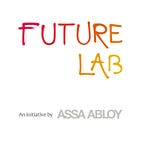3D printing and the future of manufacturing
This technology is making manufacturing more innovative.
The potential of 3D printing is mind boggling. Soon, we will be printing our own food, entire houses and even body replacement parts. Let’s step back and focus on what 3D printing has achieved today and how it will affect the industry in the near future. 3D printers range from smaller desktop printers right through to the industrial size printers. Each size has different capabilities suited to certain applications. This technology is developing rapidly and it is making the manufacturing process more innovative and efficient.
Professor Olaf Diegel was an early adopter of 3D printing. Currently the Head of Product Development at Sweden’s Design Sciences Faculty of Engineering at Lund University, he has been experimenting with printing 3D prototypes since the mid 1990's.
With 3D printing you can have an idea and ten minutes later you can test it.
“I’ve watched 3D printing get better and better,” says Diegel, adding that the real change came about five years ago when 3D manufacturing started to become a reality. “It’s been a quantum leap from doing prototypes to suddenly manufacturing real products to sell. In the future, the sky’s the limit.”
Complexity made easy
3D printing is ideal for manufacturing complex products, according to Diegel. It’s what he refers to as “complexity for free.” With traditional manufacturing, products are usually more expensive when they are complex, but the opposite is true with 3D printing.
“If you have a really complex item then 3D printing wins every time,” says Diegel. It won’t cost more, take more time or require additional tools to custom print a complex item compared to a simple one.
“3D printing could be a perfect technology for making keys,” says Diegel. “Each one can be unique without making a difference to the cost.” 3D printing also provides the option of making keys in all kinds of shapes. The ability to make more complex geometries could lead to more secure locks and keys in the future, he adds.
Everybody’s ear is different so the hearing aids are printed for each individual customer.
Fast-tracked prototypes
Today, 3D printing is being widely used to develop prototypes. These can be made in hours rather than taking days or weeks as with traditional techniques. The ability to 3D print prototypes means that designers can instantly test and tweak products until they work. 3D printing also reduces the high costs normally associated with innovation.
Diegel believes that the availability of 3D printers can also lead to more new and innovative products on the market as it helps stimulate creativity by removing the barrier of traditional manufacturing constraints. “Access to these printers makes you think in a different way. Today it’s hard to realize an idea and it takes time just to get the prototype. With 3D printing you can have an idea and ten minutes later you can test it.”
Customization without added cost
If you want your company logo on the lock or your dog’s face printed on a product, 3D printing is ideal. A batch of customized items can be printed without costing more than traditional manufacturing. “Ninety percent of the hearing aids made today are 3D printed,” says Diegel. “Everybody’s ear is different so the hearing aids are printed for each individual customer.” The result, he adds, is a perfect fit. Dental braces, shoe inserts, headphones and much more are also starting to be made using 3D printing.
According to Diegel, customers will have no idea — nor will they care about how their products are made, provided they work. “The hearing aid is a perfect example. All we care about is that it fits perfectly and the same is the case for ASSA ABLOY customers. They will get more products and better features — and eventually it will cost the same as conventionally manufactured items too.”
By Cari Simmons
Read the second part to this story where Olaf discusses the topic of sustainability in 3D printing.
Sign up and become a Future Lab member to get access to industry reports, newsletters etc. Follow us on Twitter for updates.
Olaf’s 3D dream
“I would like to be able to print electronics with 3D printers. Currently all electronic products are rectangular and we are designing around flat circuit boards. Printing wouldn’t be restricted by flat circuit boards in the future. We could make an electronic wrap around the wrist for example. It would be nice to have that option.”
